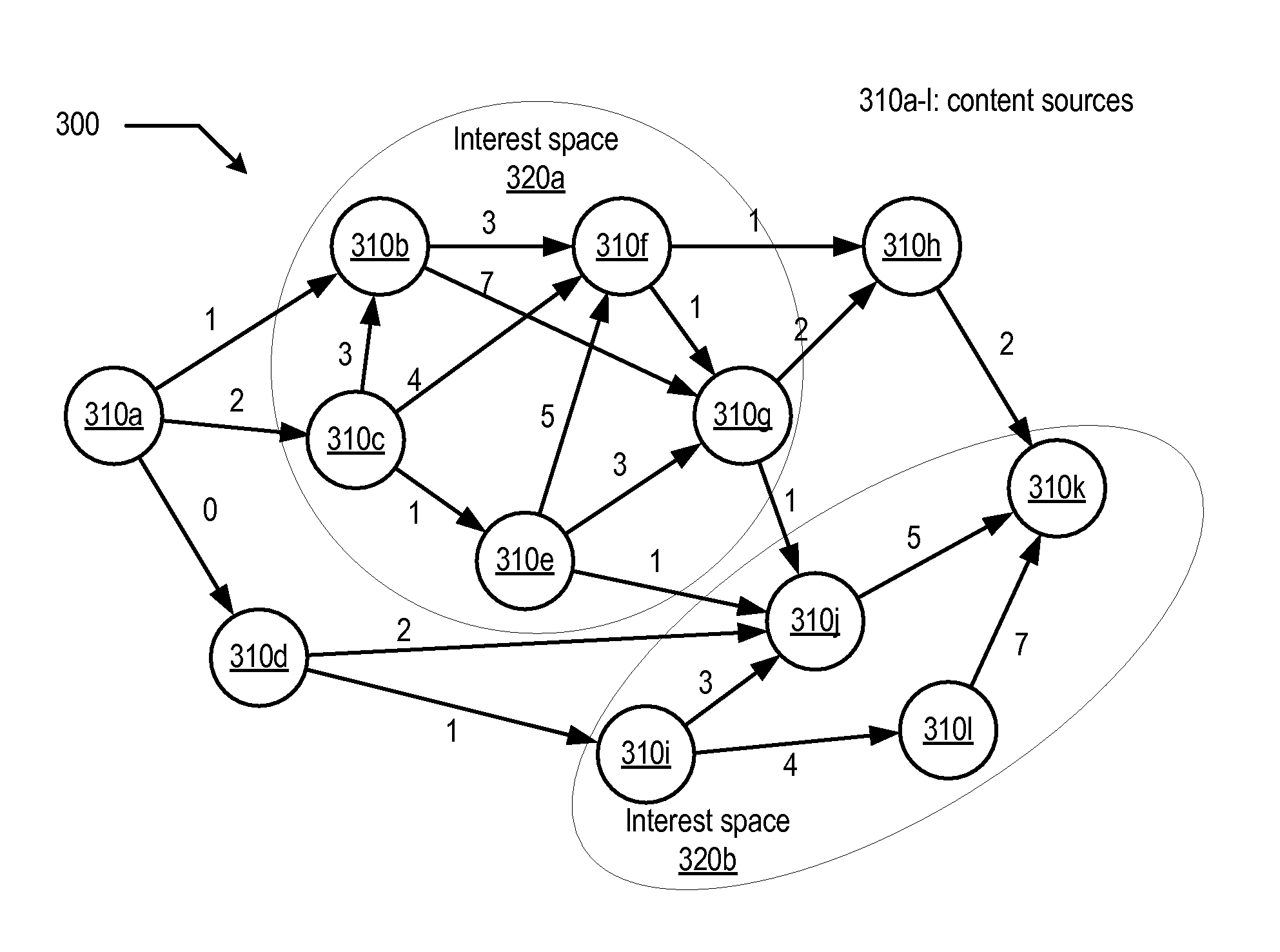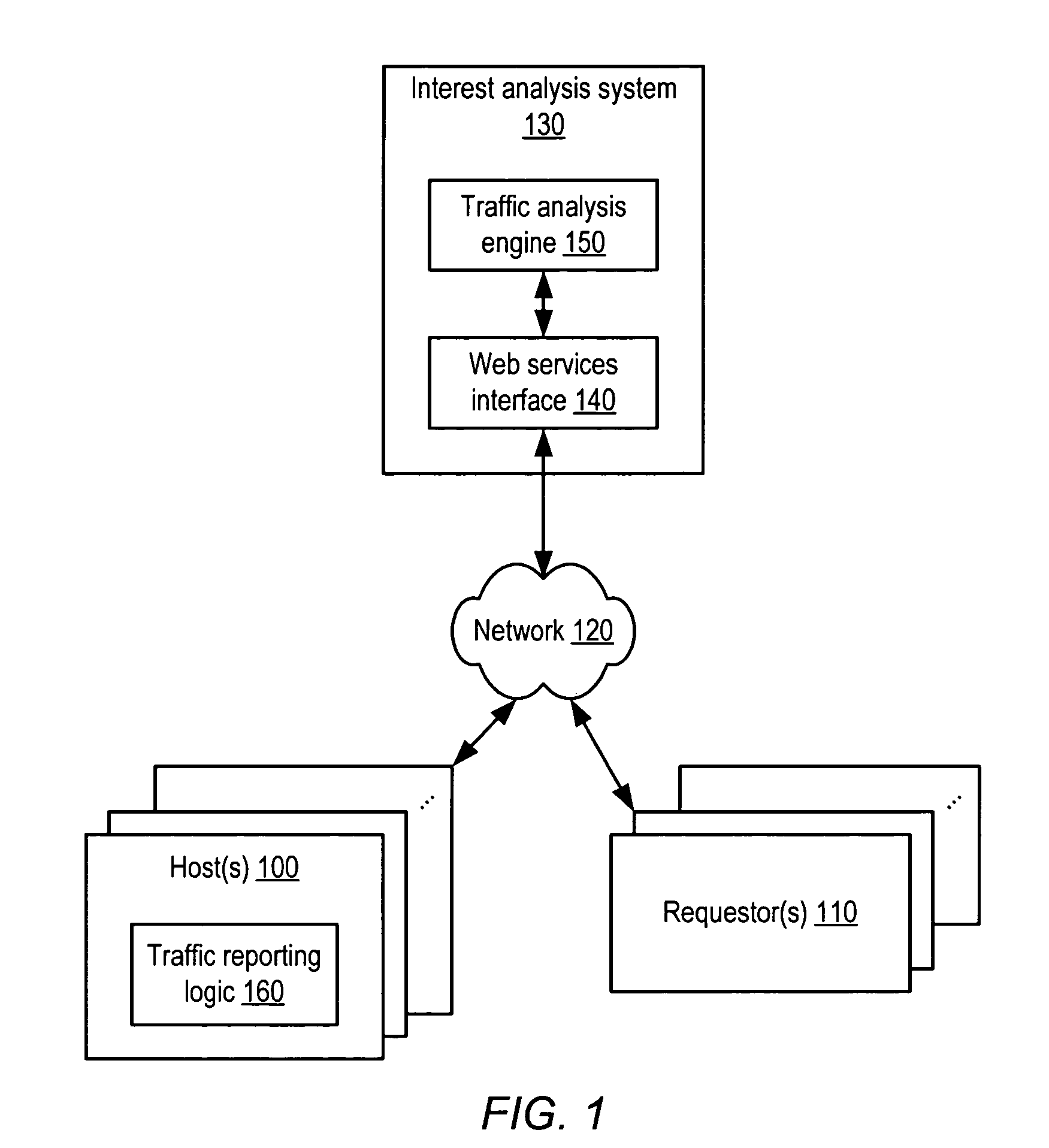Method and system for occurrence frequency-based scaling of navigation path weights among online content sources
a navigation path and frequency-based scaling technology, applied in the field of computing systems, can solve the problems of increasing the difficulty of locating content that is of general or specific interest, no standard for organizing and representing web-based content exists, and conventional index-based approaches to organizing online content suffer from a number of limitations
- Summary
- Abstract
- Description
- Claims
- Application Information
AI Technical Summary
Benefits of technology
Problems solved by technology
Method used
Image
Examples
Embodiment Construction
Introduction
[0046]As noted above, conventional schemes for indexing online content, e.g., by exhaustively crawling through such content, and statically ranking content relevance, e.g., by noting the degree of connectivity to content, may both overlook certain content and inaccurately represent its real interest to users. As an alternative approach, the interest level of online content may be determined on the basis of actual user access to such content. For example, content that is frequently requested by users (e.g., via a web browser or other type of device or interface) may be considered more interesting than content that that has many inbound links but few actual user requests. By associating a measure of content interest with actual user behavior relative to content, content interest may be determined dynamically. Indicated content interest may then rise and fall according to content access patterns that may reflect emergent properties of a networked community of users. It is n...
PUM
 Login to View More
Login to View More Abstract
Description
Claims
Application Information
 Login to View More
Login to View More - R&D
- Intellectual Property
- Life Sciences
- Materials
- Tech Scout
- Unparalleled Data Quality
- Higher Quality Content
- 60% Fewer Hallucinations
Browse by: Latest US Patents, China's latest patents, Technical Efficacy Thesaurus, Application Domain, Technology Topic, Popular Technical Reports.
© 2025 PatSnap. All rights reserved.Legal|Privacy policy|Modern Slavery Act Transparency Statement|Sitemap|About US| Contact US: help@patsnap.com



